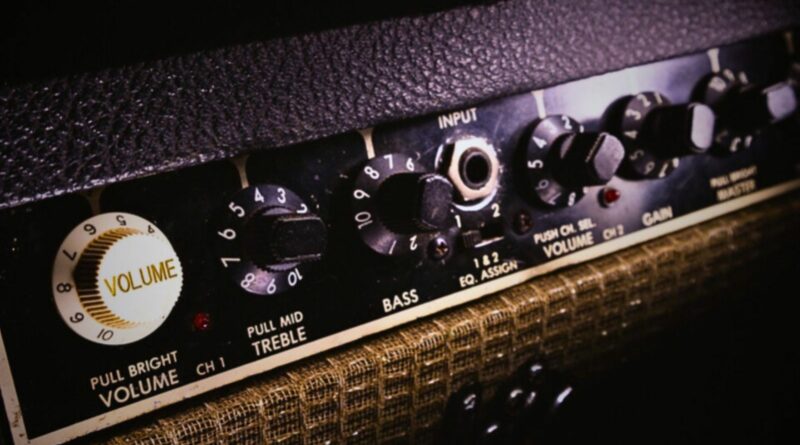According to Dave Friedman, the man behind Friedman amps and some of the complex rigs of famous guitar players, there are some pretty important issues with guitar amplifiers today. Speaking to Jeremy White in a recent interview, Dave reflected on the amp-making business, particularly the amps being “gainy” or more distorted-sounding compared to the classic stuff. Asked on the matter, he replied (transcript via Ultimate Guitar):
“I think the biggest issues — people just got out of hand over the years. So, people started making gainier amps. They got used to them, and they got used to them.”
Tackling these issues further, Dave also added:
“Also, people started playing with less volume, down to no volume. There’s an interaction between a guitar and an amp.”
According to Dave, the guitar and an amplifier form this “symbiotic” relationship and the volume from an amplifier, especially a tube-driven one, adds another dimension to the tone. He continued:
“I think we had Joe Bonamassa on our show the other day. And there’s an interaction between a guitar and an amp. There’s a symbiotic relationship between the two. And how the guitar is reacting to the speaker cabinet, and the vibrations, and the sustain you get from volume is a huge thing.”
Another issue he sees with some of the practices of modern guitar players is that they tend to reach out for that gain knob instead of adding more volume. The core of that symbiotic relationship is how a guitar’s pickup reacts to a speaker cabinet and vice-versa.
“With no volume, you might seem like, ‘Hey, I need more gain,’ or something,” he added. “Because you’re not having any relationship between the pickups and the cabinet. So it’s different.”
And, according to Dave, this is especially an issue when you’re playing lower notes on your instrument. He explained:
“If you have a lot of gain when you’re playing down low, and then you turn it up, what happens? It’s unusable. It’s uncontrollable, it’s unusable, and all of a sudden, you’re reaching back for your gain to turn it down.”
“Because the volume is doing what you need it to do. It gets louder. It’s the biggest issue these days.”
Another topic he touched upon was about the tonewoods and how they impact the tone of an electric guitar. Dave is adamant about the electric guitar body material significantly changing the overall sound in this “symbiotic” relationship and what comes out of an amp’s speaker. Asked about it, he said:
“Oh, it has a huge bearing. I know there’s some people that have done some videos where it says that it doesn’t matter. But I don’t. I don’t hear that. I don’t hear it that way.”
This is, of course, still one of the most hotly debated topics. People usually fall into one camp or the other — tonewood is either a determining factor of your tone or a completely irrelevant factor.
“The kind of body wood you have on the guitar makes a difference,” Dave pointed out. “It’s a feel thing sometimes.”
And, as we all know, there are more than a few common body materials, although there are a handful that are “standard.” Going through some of the frequently used woods, he explained:
“A basswood guitar has a softer attack to it. It’s not quite as like ‘in-your-face.’ A hard ash guitar, on the other hand, is almost brutal. It’s just bright and just punches you right in the face.”
“A maple guitar — same way, punches you in the face, kind of. Mahogany is thick and woody sort of sound, but you put a maple cap on it — like on a Les Paul — and it brings back some of the snap and the attack.”
“So it all makes a difference. Like I always say — it depends what kind of sound you want.”
Dave seems to share the same or similar opinion with legendary pickup builder Jason Lollar. In an interview from earlier this year, Jason discussed the matter, saying:
“There’s also a lot of debate about whether woods in the guitar make any difference – believe it or not, it’s hotly debated – so we have a whole wall of guitars.”
“We have five or six Teles that are made on an alder body with a maple neck, for example, and we’ll put pickups in them and we’ll match the pots. Everything, electronically, is matched. We even adjust the pickup height with a scale so we can see how far they are [from the strings].”
“We can match everything up, put new strings on both guitars – because just having old strings will make a difference in how it sounds. And, by the way, you can fool yourself into thinking, ‘This pickup set sounds darker’ because it’s got old strings on it. So we do everything.”
“A lot of times, there’s still a difference in the sound and it’s just the density of the guitar body. We have some guitars that are noticeably darker than others. Everything else is the same. So that’s another factor.”
Photo: Dejan Krsmanovic (Guitar Amplifier Details (51883980298))


